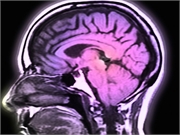Rare 'Brain Vein' Strokes Are on the Rise
By Serena McNiffHealthDay Reporter

WEDNESDAY, Aug. 26, 2020 (HealthDay News) -- Most strokes strike when an artery in the brain suddenly becomes blocked, but new research shows a rarer cause of strokes is becoming more common.
It's called cerebral venous thrombosis (CVT), and it happens when a vein in the brain is clogged. While CVT is estimated to cause less than 1% of all strokes, scientists discovered it is now more prevalent and affecting a different demographic than previously thought.
Study author Dr. Fadar Otite and his colleagues pored over years of hospital records from New York and Florida to find out how many cases of CVT occurred in these states between 2006 and 2016. Otite is an assistant professor of neurology at SUNY Upstate Medical University in Syracuse, N.Y.
Based on the data they analyzed, the researchers estimated that the number of CVT cases in the United States rose from around 14 cases per million in 2006 to 20 cases per million in 2014.
"We still find that the incidence of CVT is less than 1% of all strokes, even across our study period, but the incidence increased by 70% over time," Otite said. "In 2006, the proportion of all strokes that were CVT was 0.47%. At the end of our study, which was in 2016, that proportion increased to 0.80%."
CVT causes blood clots to form in the veins of the brain. These veins drain blood that has already been used by brain cells, sending it back to the heart to be replenished with oxygen. If a clot forms in one of these veins, it may leak into the surrounding brain tissue and could cause a stroke, the researchers explained.
While CVT is still most common in young women -- about two-thirds of all CVT hospitalizations included in the study were in females -- the researchers found that the number of cases among this demographic did not increase over the 10-year study period. Instead, they saw increases in CVT among men and older women.
"Part of the message is that we agree that CVT is still more common in women, but because of the diverse clinical presentation of CVT, when other symptoms that may be attributable to CVT are present in other demographics, we should take them with more seriousness," Otite said.
Another major finding was that CVT incidence in Black people was significantly higher than in other races. But why that is the case remains unknown. "We have no clear explanation, because this is truly the first study to ever relate the incidence of CVT between races," he added.
Several factors may put one at a higher risk of developing CVT, including pregnancy and taking hormonal birth control pills, which may be why it is more common in younger women, the researchers noted.
And many of the risk factors for CVT -- like blood clotting disorders or medications that cause clotting, severe dehydration, infections of the ear, face or neck, head trauma, obesity and cancer -- are somewhat different from the triggers typically associated with stroke.
It is important for clinicians to be aware of this rise in CVT incidence because the condition can easily be confused as something else, Otite said. Patients with CVT may have unspecific complaints such as headaches, blurry vision or seizures.
Around 3% of patients in a prior study who had CVT and went to the hospital were diagnosed with something else and sent home, according to Otite. "So, it's important to recognize this from the start, because by the next time the clinical condition may be worse," he said.
CVT can be treated with medication to thin the blood and help prevent further clotting, which may not be prescribed if the condition isn't properly diagnosed, he added.
Dr. Jose Biller, chair of the neurology department at Loyola University Medical Center in Hines, Ill., said the takeaway from this study is that more attention should be paid to CVT.
"I think that there should be an increased awareness of cerebral venous thrombosis because, by and large, when people think about stroke, they don't think about it," Biller said. "There should be an increasing level of awareness because this is a condition that has a specific treatment."
The study was published online Aug. 26 in the journal Neurology.
More information
There's more about cerebral venous thrombosis at Cedars Sinai.

The news stories provided in Health News and our Health-E News Newsletter are a service of the nationally syndicated HealthDay® news and information company. Stories refer to national trends and breaking health news, and are not necessarily indicative of or always supported by our facility and providers. This information is provided for informational and educational purposes only, and is not intended to be a substitute for medical advice, diagnosis, or treatment.

